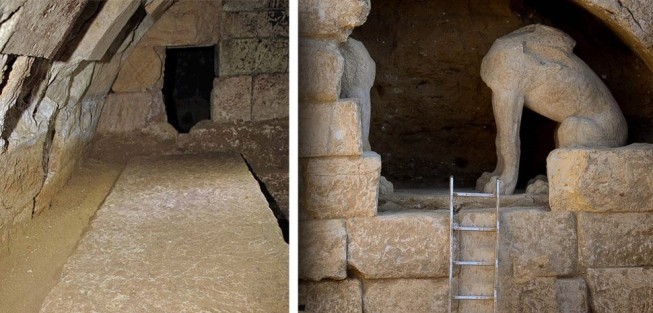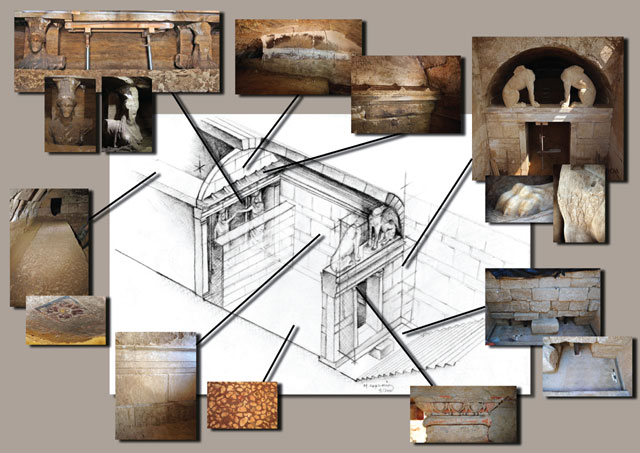An axonometric representation showing the main findings of the ancient tomb of Amphipolis was released by the Ministry of Culture and Sport. The sketch designed by architect Michalis Lefantzis includes the outline of a detailed map showing the findings of the tomb in the relevant places starting with the sphinxes at the entrance and ending with the caryatids, just meters way from a third entrance.
CLICK HERE for an interactive tour of the tomb.
The archaeologists are working their way towards entering the third chamber behind the caryatids however first need to carry out technical work in order to prevent a cave-in.
Steadfast in their philosophy of remaining cautious in statements to the media, archaeologists working at the site did not make any estimations regarding what might be behind the third entrance, however a photograph with the rectangular portion of the top of the second diaphragmatic wall found fallen in the second chamber shows a trace of color discernable from within the darkness of the third chamber.
Sources state that archaeologists are already aware of what lies behind the third wall, quite possibly a sculpture or painted decoration similar to the ones that have already come to light. There are hopes that there will be a reference to the identity of the person or people that this tomb was built to house in the afterlife.
There is a theory that the goal of the person who ordered the tomb was to create a mausoleum of unparalleled quality, surpassing the majesty of any that had been created until the end of the 4th Century B.C. Should this theory prove true, then the world is in for an exquisite discovery, even greater than that of the tomb of Phillip II at Vergina where treasures were made of marble and ivory and showed intricate artistry.
General Secretary of the Ministry of Culture Lina Mendoni told Kathimerini that the monument has many elements that indicate that the person who the tomb belongs to had a “cosmopolitan” outlook.
Ask me anything
Explore related questions






